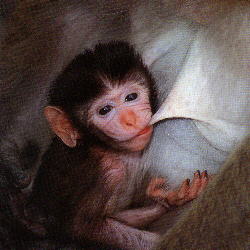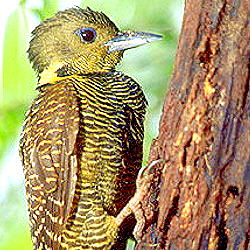 |
 |
 | This was written for would-be wildlife photographers motivated by a genuine love for their subjects. Sadly, they appear to be in short supply these days, with more and more people taking such pictures just to make money or win competitions, even if it means endangering or killing the subject. Given the conservation problems of today, a wildlife photographer without a sound ethical approach and a genuine concern for the welfare of his subject is worthy of little more than contempt, worse than a hunter. |
Careless conduct can drive the animal away from the area or wreck its breeding cycle. When dealing with endangered species, this only makes things worse, and may lead to the extinction of the species. However good the equipment, a photograph can only be as good (or as bad) as the person behind the camera!
| In the final analysis, this human element is every bit as important as all the gadgets and accessories acquired in order to take good photographs. The key is to learn as much as possible about your subjects. And of its environment too, lest you endanger other animals in the same habitat while trying to get close to your subject. The rarer the species, the greater one's knowledge should be and the more care one must exercise when approaching them. |  |
This is particularly so when working in other countries - for all you know, you may be dealing with a subject already on the brink of extinction. Your research could well make a difference to your photographs, lift them out of the ordinary. If you are unsure of your facts, play the umpire. Give the benefit of the doubt to the animal and get the picture some other day, or in some other place, rather than endanger your subject. In this age of the global village and cheap airfares, a most worrying trend I have recently noted is the tendency shown by some photographers to shed all care and inhibitions when working in less developed countries.
 | Some of this ilk, even from the most prestigious organisations and agencies, have been seen in Sabah, Sarawak and Kalimantan, taking photographs of captive birds by putting them in artificial cages filled with tropical foliage to simulate natural surroundings. For all their pious talk about habit depletion and endangered wildlife, rather than set higher standards, they capture wildlife for photographic purposes, aided and abetted by equally pious-sounding scientists and conservationists from Europe and America! |
Breeding behaviour is fascinating and yields fine pictures. Yet, it is also a time when the animal is at its most vulnerable. Care must be taken to minimise risk to the subject and its environment. Stalking or harassing it will separate young ones from the parents and put them at risk. The area around the nest is often cleared of leaves and twigs that may effect the composition.
| Quite frequently, this is taken to extremes, such that it exposes the nest and endangers the young ones. A simpler, and more effective method, is simply to tie back all unwanted herbiage with a short length of string. And, of course, to remove it after each photo session. When using photographic hides, it is particularly important not to leave the hide unattended or to visit it so frequently as to leave a clear trail to and from the nest. |  |
This may provoke the parents into abandoning the nest or enable predators to find the breeding site. When and where to place a hide often depends on the subject. They are much like humans. Some will permit closer approach than others. Patiently watching your subject as it approaches and leaves the nest, and its reaction to your presence, will help you decide where and how close to place your hide.
 | As a general rule, it is always better to place the hide as far away as possible from the nest to begin with, then move it closer little by little over a few days. Or even use a long lens. This has an advantage - a noisy shutter will not startle them too much. Knowing exactly when to put up the hide is also important - get it up too early in the breeding cycle and the birds will readily desert the nests and eggs. They are less likely to do so once the young ones have hatched out. |
Once the hide is in place, the birds should be given time to accept it before the hide is moved any closer. It is best to move the hide late in the afternoon to give them time to accept it and get back to the nest before nightfall. It would also be wise to keep an eye on the weather. Going in and out of the hide during bad weather may frighten the parents off the nest and expose the young ones to the weather.
| Once inside the hide, never rush your pictures. The birds will be nervous to begin with, so take your time and let the birds settle down. If they do not, or are too distressed by your presence, never hesitate to pull out. Try again the next day - or sacrifice your pictures altogether. Do not attempt to handle young birds in a nest. As the fledglings get older, they become extremely wary and, when frightened, are likely to "explode", scatter every which way they can! |  |
Should this happen, be careful when searching for them in tall grass - you may step on them. If they are very young, and you have someone to help you, and put them back into the nest one at a time, keeping them covered until they settle down again. If they are almost fully grown and can fly, they may be impossible to recover. It should never have happened in the first place but it might be better at this point to cut your losses and leave the area at once. With luck, attracted by distress calls from the young ones, the parents may come back.
 | Finally, never divulge the location of a breeding site to anyone else. I remember a situation when I was preparing to photograph a rare bird on the Ash Ranges in Surrey. The site was a secret known only to a select few. Somehow, someone blabbed, and before too long, the place was crawling with all sorts of twitchers. I lost the picture but the loss was far more serious - the bird abandoned the nest. |
Then, again, there was the Hobby's nest at Fleet, which we had watched carefully for a long time. Before we felt the young ones were ready for our approach, someone not only climbed up to destroy the nest but also killed the young chicks.
| | |
| | |